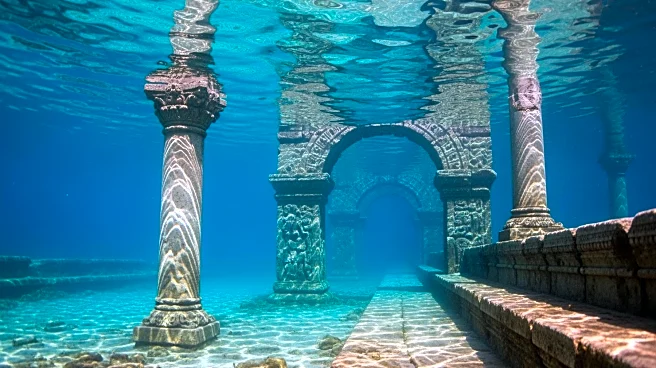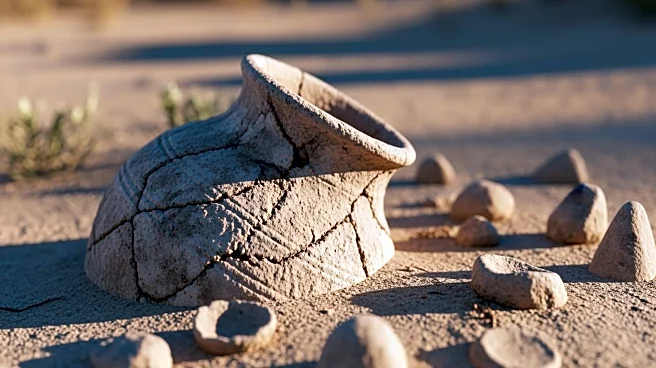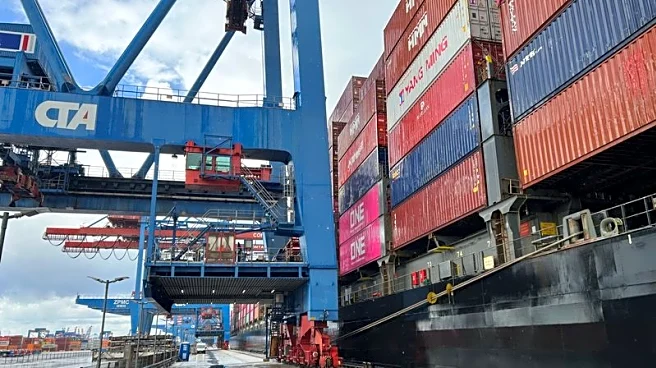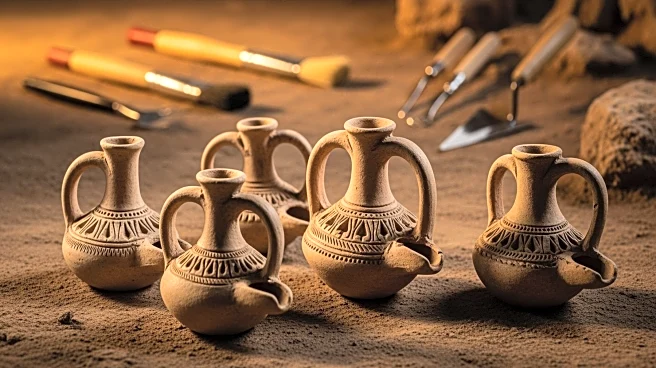What's Happening?
Archeologists from the Russian Academy of Sciences have uncovered a submerged city beneath Kyrgyzstan's Lake Issyk Kul, believed to have been destroyed by a 15th-century earthquake. The excavation revealed
multiple fired brick structures, stone structures, and wooden beams, painting a picture of a once-thriving metropolis. Among the findings were remnants of a public building that could have served as a mosque, bathhouse, or school, and a 13th-century Muslim necropolis. The city, known as the Toru-Aygyr settlement, was situated on a major section of the Silk Road, a historical trade route connecting China and the Mediterranean.
Why It's Important?
The discovery of the submerged city provides significant insights into the historical Silk Road, a crucial trade route that facilitated cultural and economic exchanges between the East and West. The artifacts and structures found at the site offer a glimpse into the daily life and architectural practices of the time, enhancing our understanding of ancient civilizations. This finding also underscores the impact of natural disasters on historical settlements, as the city was abandoned before the earthquake. The research contributes to the broader field of archaeology by offering new data for analysis and dating, potentially reshaping historical narratives about the region.
What's Next?
The artifacts discovered will undergo accelerator mass spectrometry dating to determine their age, providing more precise historical context. Researchers will continue to analyze the findings to better understand the cultural and economic significance of the Toru-Aygyr settlement. The study may prompt further exploration of other submerged sites in Lake Issyk Kul, potentially uncovering more about the Silk Road's influence on regional development. The findings could also lead to increased interest in preserving and studying submerged archaeological sites worldwide.
Beyond the Headlines
The discovery raises questions about the preservation of submerged archaeological sites and the ethical considerations in excavating them. It highlights the importance of international collaboration in archaeology, as the expedition involved researchers from multiple countries. The findings may also influence cultural tourism in Kyrgyzstan, attracting visitors interested in the Silk Road's history and the newly discovered site.












